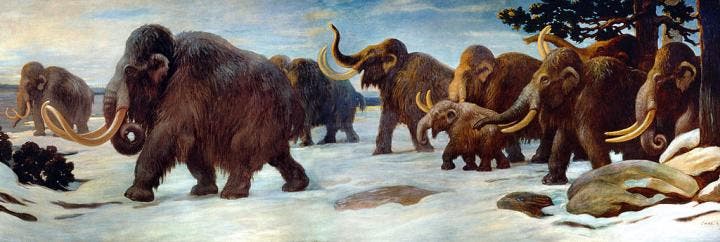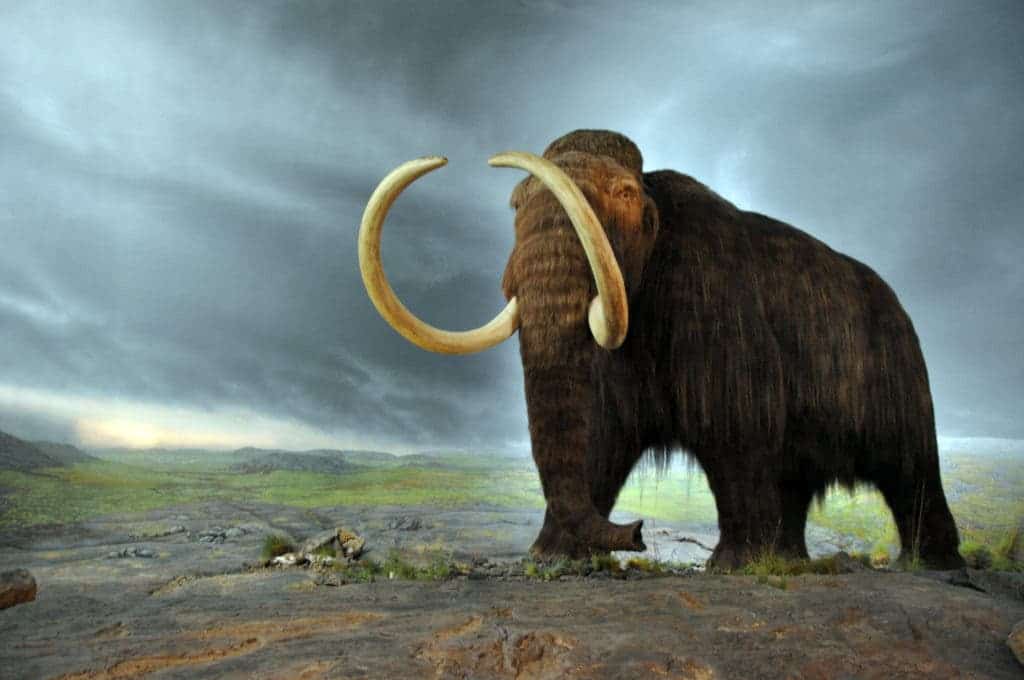Dwindling numbers of woolly mammoths brought forth another problem: a “mutational meltdown.” The last surviving members of populations were not much less prepared to deal with harsh conditions than their predecessors, a new study has revealed.

They were once some of the most common herbivores in North America and Siberia. Rising temperatures and an increasing number of predators (read: humans) wiped most of them out about 10,000 years ago. However, as recent studies have shown, small, isolated populations survived on some islands up until 3,700 years ago. when the species went fully extinct. In this study, researchers compared the genomes of these “surviving” mammoths and the ones of their predecessors from the mainland, dating back to 45,000 years ago.
Some mammoths had no olfactory sense. How did they smell? Terribly, likely.
The in-depth comparison showed that the island mammoths had it pretty rough. Because their population was so small, they accumulated multiple harmful mutations to their genome, which interfered with major gene functions. For instance, they had virtually lost their sense of smell, suffered from urinary problems, and had a translucent and satin coat.
“In this island mammoth there is an excess of what look like bad mutations right before the mammoths go extinct,” said Rebekah Rogers, co-author of the study from the University of North Carolina.
Published in the journal PLoS Genetics, the study compared only two woolly mammoths — one lived 45,000 years ago in mainland Siberia in a large population, and the other lived about 4,300 years ago on Russia’s Wrangel Island, among a population of around 300. So they only looked at two beasts, which might not paint the full picture, but definitely gives us a clear indication of what the last mammoths went through, which is pretty amazing if you think about it. Rebekah Rogers adds:
“When I first started this project, I was excited to be working with the new woolly mammoth sequences, published by Love Dalen’s lab. It was even more exciting when we found an excess of what looked like bad mutations in the mammoth from Wrangel Island. There is a long history of theoretical work about how genomes might change in small populations. Here we got a rare chance to look at snapshots of genomes ‘before’ and ‘after’ a population decline in a single species. The results we found were consistent with this theory that had been discussed for decades.”
It’s not like this is surprising in any way. We’ve known for a long time that small, isolated populations go through significant changes. The lack of adequate natural selection combined with inbreeding generally leads to an accumulation of mutations — but the study gives us the chance to see how this happens. Montgomery Wilson Slatkin, who was also involved with the study, is an American biologist, and professor at the University of California, who has dedicated his career to developing mathematical models of how genomes will look different when population conditions change. His work might shed some light on how dwindling populations are affected by this genetic stress — something more and more important as we seem to be causing a major extinction.
Satin fur and heartburn

This also fits in with modern genetic research. For instance, researchers have identified an interesting mutation in the island mammoths, one that in mice causes satin fur. If the effects were similar in mammoths (which is a highly plausible assumption), then the isolated population looked better than their mainland cousins… but this wasn’t really a boon for them. Smooth, silky fur is less effective at protecting against the cold and damp weather. Furthermore, satin hair is associated with other problems:
“A lot of satin mutants are known to have digestive problems, and so it may have had heartburn, it may have had trouble digesting its food,” Rogers said.
But these mutations might also hold a few positives within. Matthew Cobb, professor of zoology at the University of Manchester who was not involved in the study, believes that the island population might have quickly adapted to their new environment.
“Assuming that these mammoth smell genes are truly non-functional, this may represent an adaptation to the particular conditions on Wrangel island,” he said. “Olfactory genes evolve very rapidly, and can quickly become non-functional where they no longer serve any function because food sources or predators have changed.”
He too believes the findings can be applied to today’s situation.
“For the mammoths, the end point was extinction; these findings may enable us to develop better conservation strategies for animals that are currently endangered,” he said.
Journal Reference: Rogers RL, Slatkin M (2017) Excess of genomic defects in a woolly mammoth on Wrangel island. PLoS Genet 13(3): e1006601. doi:10.1371/journal.pgen.1006601






